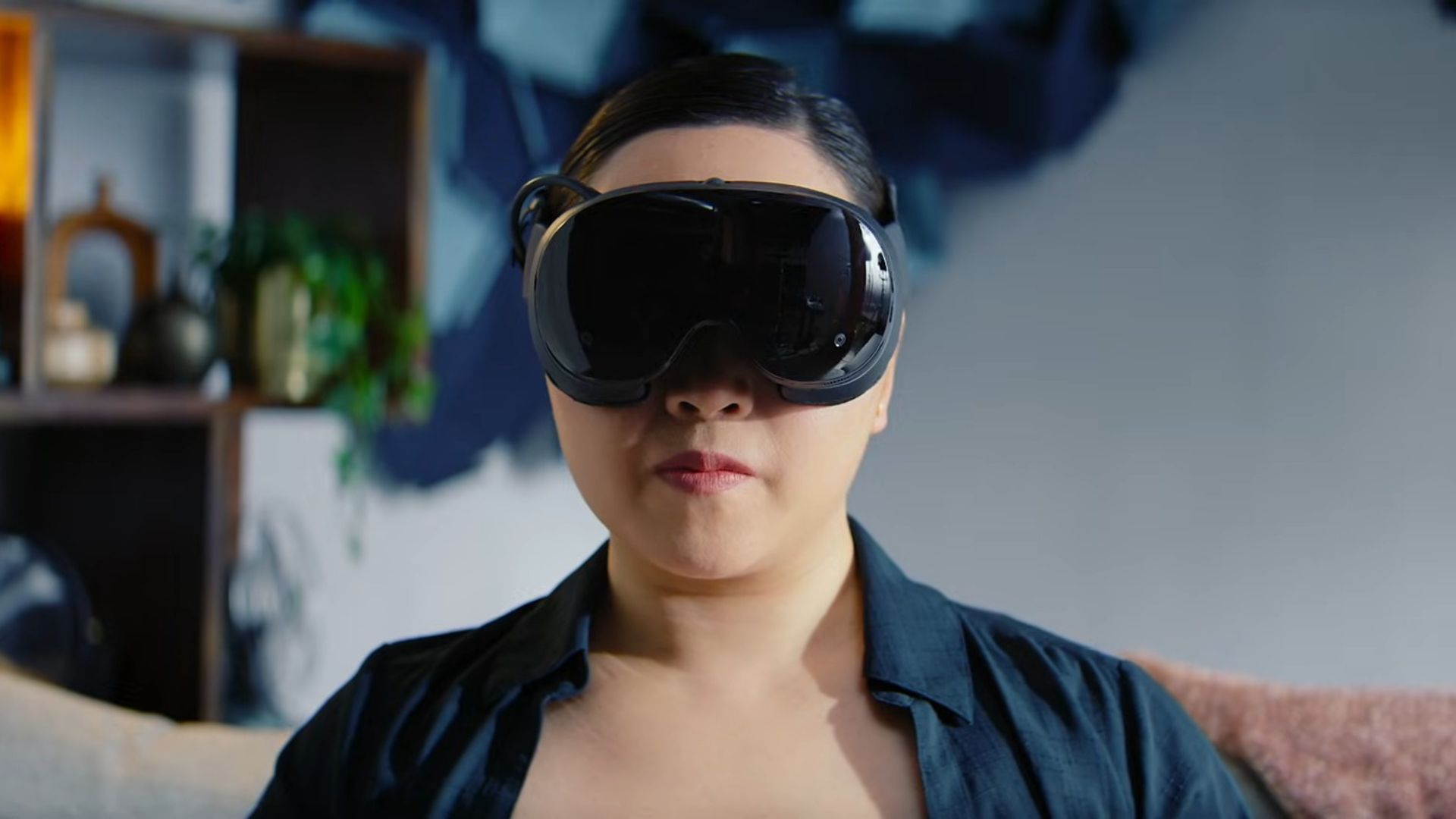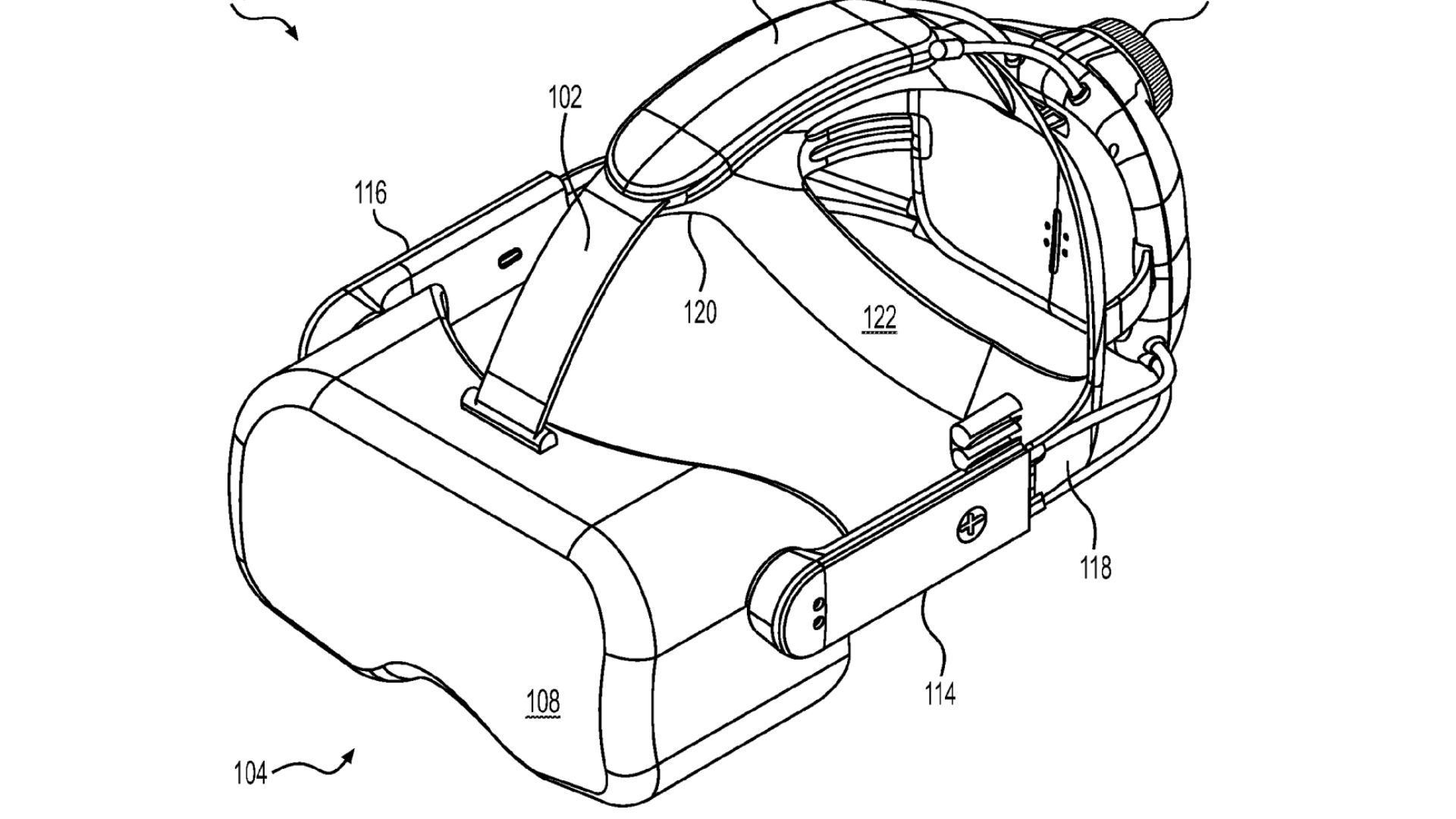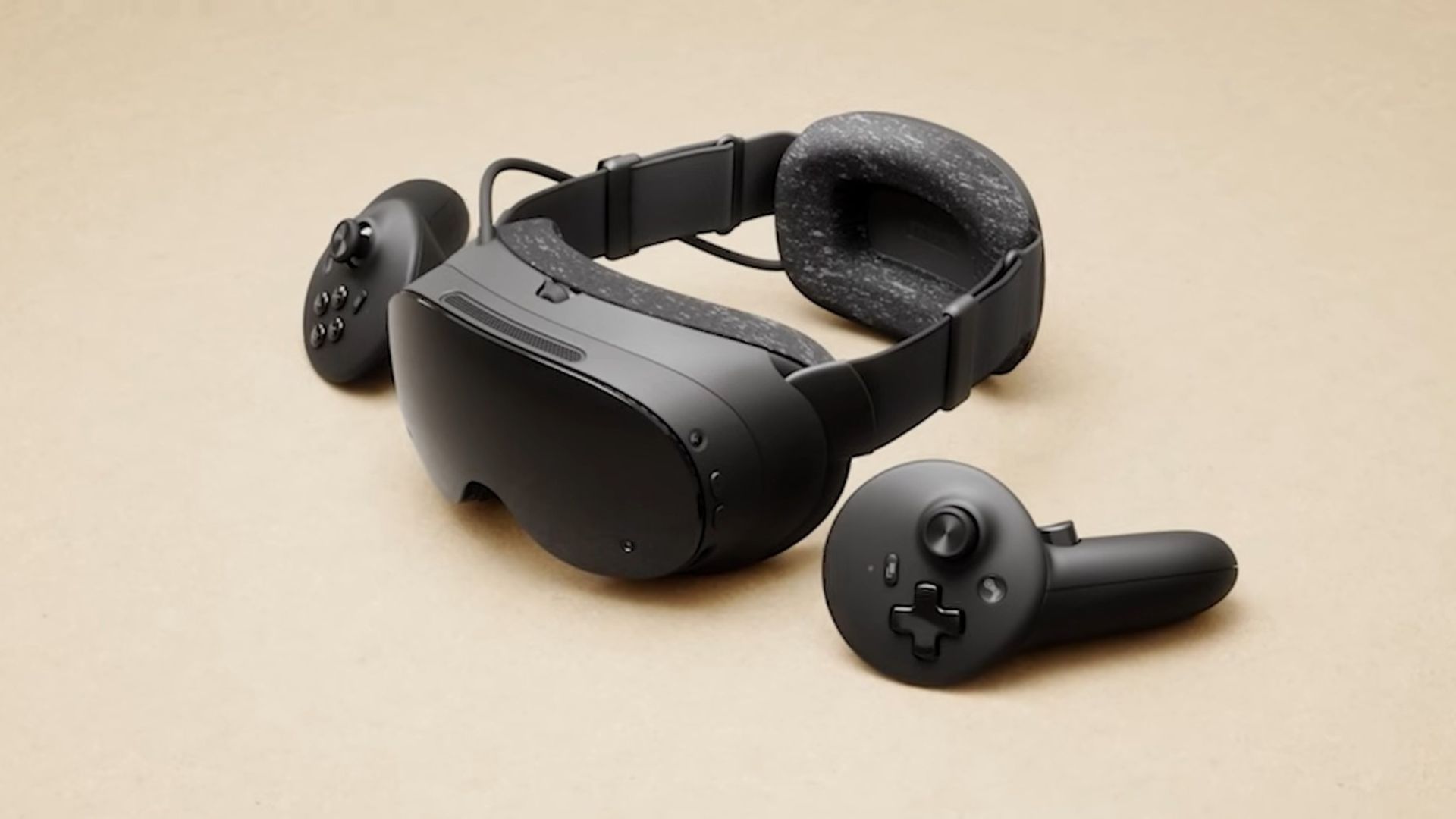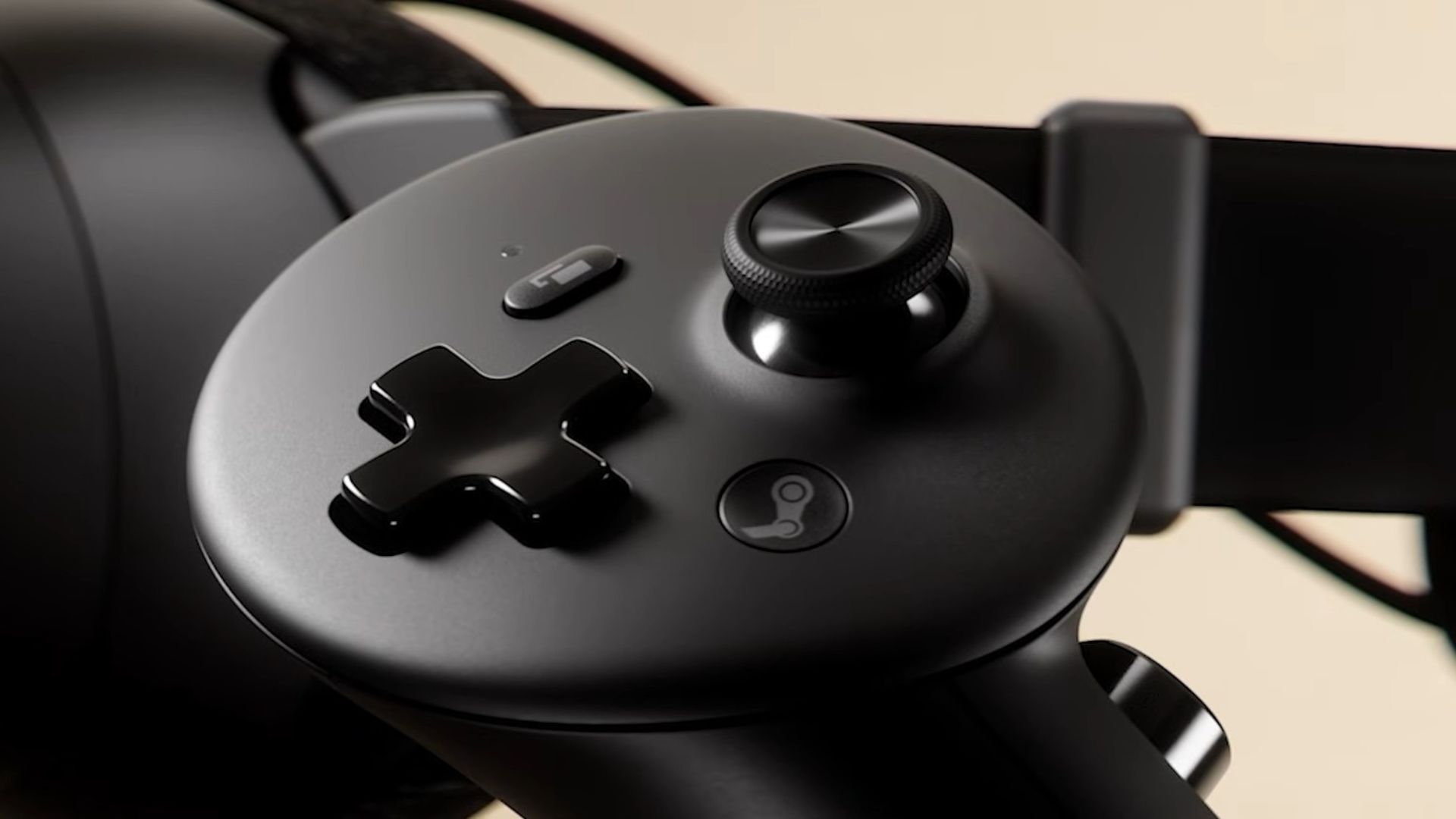Everything we know about Steam Frame, the VR headset previously codenamed Valve Deckard
Steam Frame arrives next year along with a new Steam Machine and a controller

It's been a long time of speculating, listening to rumours, and waiting for official word from Valve, but we've finally had the announcement. Valve's next VR headset is real, and now that we know, it's time to round up everything we know about Steam Frame. Up until now, we've known it by its codename, Valve Deckard, but we can now confirm that the Frame will arrive in early 2026 as an official member of the Steam Deck hardware family.
From the outset, it looks as though Gabe Newell's company is taking a really different approach with this headset than it did with the Valve Index. Valve's first headset earned a spot among the best VR headsets, and depending on who you ask, it's still up there with some of the best visors for gaming ever made. We've waited a long time for a sequel, but Steam Frame has its head firmly in the present moment - no looking back into the legacy of Index's era. Steam Frame will run on Steam OS as a standalone headset, with wireless linking to a gaming PC.
Accompanying this head mounted display (HMD) is a new Steam Controller, and the latest iteration of the Steam Machine, both of which managed to fly under the radar compared to all of the leaks Valve Deckard has fallen victim to. But just how many of those rumours held up, and what do we actually know about Steam Frame so far?

What is Steam Frame?
Steam Frame is one third of a new family of gaming hardware coming from Valve. It runs on SteamOS as a standalone device, but thanks to a wireless adapter bundled in with it, it can stream a low-latency connection to a gaming PC to make the most of beefier computing hardware.
We know it's arriving in early 2026, but we don't know its official price or release date yet. The most that we know about it comes from Valve's official announcement video, which you can watch below.
What are the Steam Frame's specs?
Processor | 4nm Snapdragon ARM processor |
Memory | 16GB Unified LPDDR5 RAM |
Wi-Fi | Wi-Fi 7, 2x2 |
Storage | 256GB or 1TB UFS + MicroSD card slot for additional storage upgrades |
Lenses | Pancake |
Display type | LCD |
Resolution | 2160 x 2160 per eye |
Refresh Rate | 72-120Hz (144Hz experimental) |
FOV | Up to 110 degrees horizontal |
"Valve Deckard" and what we heard in leaks and rumors

Speculation that Valve was making a new VR headset actually started way back in 2021. Gabe Newell, Valve's CEO, said at a panel talk that the company was making big investments in new headsets. While that's hardly a confirmation that it's been working on a new device since then, it showed that Valve has VR plans beyond the original Index.
pic.twitter.com/Xu2ikA5A4FDecember 1, 2021
More recently, speculation and rumours from Gabe Follower on Twitter (who has a notable track record of releasing Valve's plans ahead of time) said that Deckard will be a new standalone VR headset that will run on a refined version of SteamOS. That means it'll be able to be used without the addition of a gaming PC, and that it'll run on the same operating system as Valve's Steam Deck and Steam Deck OLED.
Weekly digests, tales from the communities you love, and more
The purported bonus of running on this OS isn't just that it puts Valve's SteamVR library front and center, but that non-VR games that already run on a Steam Deck will be playable on Valve Deckard for even more portable, play-on-the-go versatility.
Several people have confirmed that Valve is aiming to release new standalone, wireless VR headset (codename Deckard) by the end of 2025. The current price for the full bundle is set to be $1200. Including some "in-house" games (or demos) that are already done. Valve want to give… pic.twitter.com/alHzQuwNvcFebruary 26, 2025
Even though the device is titled to be a standalone headset, it's also possible that the Valve Deckard stays true to its roots and has either HDMI or DisplayPort connectivity for those who want a more powerful, visually lossless VR experience.
According to leaked schematics, Deckard will be paired with controllers that are codenamed "Roy" and look fairly similar to standard VR controllers we've seen already. It looks as though, like Meta Quest 3, Valve has ditched the tracking rings on these ones, though.
In April of 2025, SadlyItsBradley, one of the most well-known sources of VR leaks on the internet, came out with news that Valve has apparently been importing equipment to manufacture HMDs (head-mounted displays) and facial interfaces in the US. The "insider" posted shipping manifests and images attesting to this report, which can be seen below.
Valve has been importing equipment to manufacture VR headset facial interfaces inside the USAThe equipment is being provided by Teleray Group who also manufactured the gaskets for the Valve Index and HP G2 Omnicept pic.twitter.com/7iukcZhKz5April 9, 2025
This led a lot of press to believe that Valve Deckard might not be so far off its rumored 2025 timeline, and that it would seem the headset is being manufactured, at least in part, in the US.
According to a more recent set of reports in May, which again, should be taken with a pinch of salt, the founder of Lynx, a French startup in the XR space, has some knowledge of Valve Deckard. Stan Larroque said on Twitter, "The design of Valve next HMD is quite amazing!
"I would be equally pissed if Lynx nextgen ID got leaked so I won't share more. I'm just excited for good new XR HMDs. The HMD-making world is so small, we all share the same suppliers for some components."
Larroque later claimed that Deckard won't launch until 2026, but this is the first bit of speculation that points to a launch date outside of 2025.

The latest news about Valve Deckard before the official announcement came from a report from UploadVR, which seems to suggest that Valve's next VR headset had entered mass production.
The report stemmed from a Chinese analyst group called XR Research Institute, which apparently claimed that the launch was set for 2025, in the holiday season. While that turned out to be untrue, it's believable that the device has entered production. I'm still unsure about the quantities it cited, however.
XR Research Group estimated that the new Valve headset is set for a production run of 400,000 to 600,000 units per year - which is a similar ballpark figure to the Apple Vision Pro's production numbers. That does hint that this headset will cater to a higher-end market, since the sales figures of the Meta Quest 3 and 3S are both slated to be in the millions, and they're at more affordable prices. Since Steam Frame shares the same design ideology as the Steam Deck (an accessible and fairly affordable gaming device, I'm not sure this will be accurate).
Deckard DV1 and DV2 models appeared in tonight’s SteamVR betaFor Valve hardware: DV units are the final stages before the model (PV) that consumers will buy pic.twitter.com/xO4PJop1WqOctober 9, 2025
Perhaps most interestingly, renowned VR leaker SadlyItsBradley also posted some code from an updated SteamVR beta, which people took to suggest that not one, but two different Valve headsets are on the way. This could mean that two different SKUs are headed for the shelves - but Valve hasn't confirmed this, so I don't think it's worth believing for now.
When will Steam Frame launch?

We know that Steam Frame will launch in early 2026, but that's a pretty generous window for now. It's hard to predict a date, but I would personally guess that March is the earliest we'd see the new Steam hardware hit the shelves. Launching new hardware like this in January or February typically goes against industry practices since most people spend money in the Holiday window, and expectations are that no one would have the expendable income in January or February to splash out on new tech.
We're still waiting for official confirmation from Valve about when Steam Frame will launch, and when we get more news on that, I'll update you here.
How much will Steam Frame cost?

While we still don't have an official price, we do have a few rumours from before the announcement of Steam Frame that point to the new headset being around $1,200.
What we do know is that the VR market has shifted dramatically since the Valve Index arrived, and not every standalone device is created equal - or priced the same.
Back in the Valve Index's day, PC-tethered headsets were the name of the game, but they were a luxury item that cost at least $1,000. Thankfully, the hardware has come a long way since, because you don't need silly room tracking modules, or even wires, if you don't want them.
Now, we have headsets like PSVR 2, which beats the Valve Index in a lot of its specs and features, and costs under $500. Taking up a bigger chunk of the market, though, are standalone devices, and since it's rumoured that Valve Deckard will fit into this niche, its prices could point to a more reasonable (and affordable) device than last time.
Id personally guess that based on its specs, the Steam Frame won't cost as little as the Meta Quest 3S, but probably a little more than the 512GB Quest 3 and Pico 4 Ultra. If Valve really wants to take the fight to Meta, it should be aiming for the Quest 3's price spot though.
I certainly don't see the Frame costing as much as Galaxy XR or Apple Vision Pro, mainly because it's not targeting a spatial computing, high-end niche market, and it doesn't have the really expensive OLED panels those headsets do.

The Meta Quest 3, the Meta Quest 3S, and the Pico 4 Ultra are what a new Valve headset will need to compete with in the standalone market. The most affordable of those options is the Quest 3S 128GB model, which only costs $299. I'd wager the Deckard headset will cost more than these devices since it's likely targeting a higher-end gaming market, but I hope it won't drift as high as the Apple Vision Pro, which costs a ludicrous $3,500.
Perhaps most appropriate for comparison is the HTC Vive Focus Vision, a PC-tilted but still standalone VR device. It's designed for visually lossless VR gaming on PC, so it's a natural competitor to whatever Valve is cooking up. That headset costs $999 - which aligns it closer to the original Valve Index.
I'd personally like to think that Valve has learned from the affordability of its Steam Deck and Steam Deck OLED, so I'd hope the Valve Index undercuts HTC. My personal hopes for a price for Valve Deckard would be around the $700 mark, but it entirely depends upon the chipset used, because if it can offer substantially more power than a Quest 3 or Pico 4 Ultra, it'll be worth the extra money versus one of the best gaming handhelds.
What games will Steam Frame be able to play?

Since it runs on Steam OS, Frame will be able to play your entire Steam library - both flat screen and immersive titles.
The initial batch of announcements and coverage also seems to mention other VR experiences from Windows having compatibility.
Unlimited access to SteamVR gives the Frame loads of titles to play at launch, but we haven't heard any confirmation of any new VR games made by Valve for the new headset - like we did with Half Life: Alyx.
Upgrading your PC for Valve Deckard's arrival? Take a look at the best RAM for gaming, the best CPU for gaming, and the best graphics cards.
One of my earliest memories is playing SuperMario64 and wondering why the controller I held had three grips, but I only had two hands. Ever since I've been in love with video games and their technology. After graduating from Edinburgh Napier University with a degree in Journalism, I contributed to the Scottish Games Network and completed an Editorial Internship at Expert Reviews. Over the last decade, I’ve been managing my own YouTube channel about my love of games too. These days, I'm one of the resident hardware nerds at GamesRadar+, and I take the lead on our coverage of gaming PCs, VR, controllers, gaming chairs, and content creation gear. Now, I better stop myself here before I get talking about my favourite games like HUNT: Showdown, Dishonored, and Towerfall Ascension.
You must confirm your public display name before commenting
Please logout and then login again, you will then be prompted to enter your display name.



